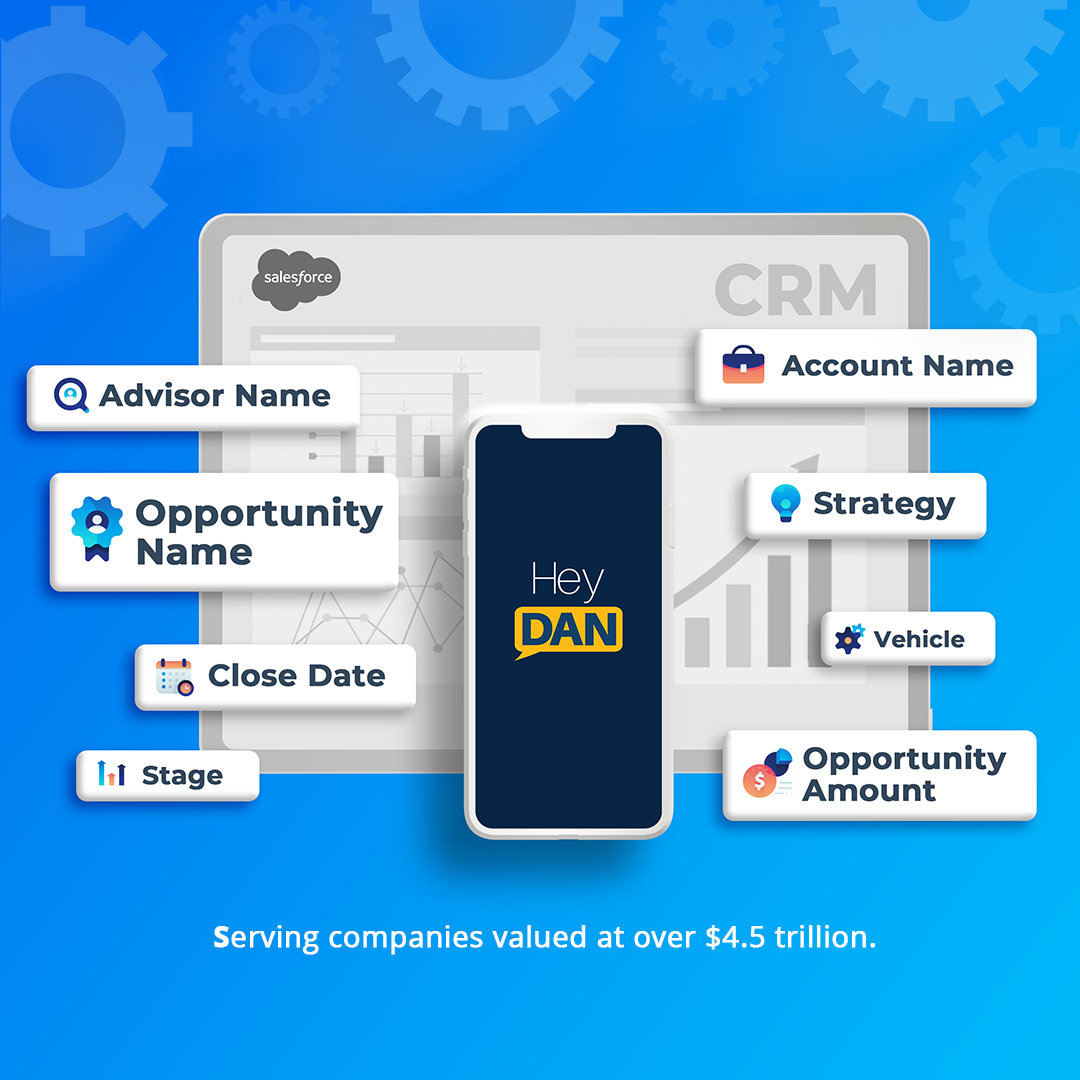 During unpredictable times, many employees are buckling under the weight of the new world. Employees look towards their employers for stability and comfort. It’s not easy to engage multiple people at once, especially for big companies who have thousands on their list.
During unpredictable times, many employees are buckling under the weight of the new world. Employees look towards their employers for stability and comfort. It’s not easy to engage multiple people at once, especially for big companies who have thousands on their list.
Luckily, a well-implemented CRM system can make all the difference. Here are a few ways to engage your employees with your internal CRM system:
CRM Strategies for Internal Employee Engagement
Ask employees how they are
With the rise of work from home arrangements, many employees are still struggling to adapt. Creating avenues for employees to share their new grievances will give upper management a better insight on how to improve their productivity and overall happiness.
Give mental health support
Regardless if an employee is doing well or needs help, offering help is always welcome. Whether it’s sending them discount coupons for hiring cleaning teams or tips for stress relief, it’s good to make employees know that their mental wellness is a priority for their company.
Greet them on special days
When you keep track of relevant details about your employees, it becomes easier to greet them on their special days. From birthdays, mother or father’s days, company anniversaries, and so on, a little acknowledgment goes a long way to making employees feel special.
Suggest ways to bring teams together
Having opportunities to bring people outside meetings are necessary for team building. Employees need to feel like they’re more than just there to do their job. From zoom drinking mixers to online yoga classes, there are plenty of ways that companies can create spaces for their employees to get to know each other outside of meeting rooms.
Give your employees regularly updates on company projects & plans
Companies need to share their vision before their employees can help build it with them. They need to be clear about the successes, failures, and plans to move forward. Sharing insights and progress on company projects and plans make employees see their contributions come to life.
Publicly praise good performers
It’s not enough to share company success. Employees also need to feel like their work is valued. It’s important to thank and uplift employees who have given their time and energy towards bringing projects to life.
Maintaining Your Employee CRM Data
While keeping track of your customer’s CRM data accuracy is already a handful, many companies do not have dedicated teams that make sure that employee CRM systems are up-to-date. Not doing so is a wasted opportunity for companies to maximize their CRM system investments.
With a well-designed employee CRM system, each conversation can be personalized, engaging, and relevant. It’s a great way to make every employee feel that they are valued. Partnering with CRM enablement technology providers such as Hey DAN can make a big difference in making sure you never forget a name, role, and milestone.
Hey DAN uses machine learning and human touch to make sure that every detail that your employees share with you gets logged from ; Hey DAN makes sure that every customer, even your internal ones, feel appreciated.

 How AI CRM Entry Boosts Sales Forecast AccuracyMarch 25, 2025 - 12:47 pm
How AI CRM Entry Boosts Sales Forecast AccuracyMarch 25, 2025 - 12:47 pm 5 Reasons Top Sales Teams Are Using Hey DAN for CRM AutomationFebruary 14, 2025 - 11:22 am
5 Reasons Top Sales Teams Are Using Hey DAN for CRM AutomationFebruary 14, 2025 - 11:22 am The Cost of Manual CRM Data EntryJanuary 31, 2025 - 9:18 am
The Cost of Manual CRM Data EntryJanuary 31, 2025 - 9:18 am Why CRM Entry Needs a RevolutionJanuary 25, 2025 - 3:10 am
Why CRM Entry Needs a RevolutionJanuary 25, 2025 - 3:10 am Hey DAN’s Compatibility with Microsoft IntuneJanuary 3, 2025 - 11:01 am
Hey DAN’s Compatibility with Microsoft IntuneJanuary 3, 2025 - 11:01 am
Issues with CRM Form Validation
/in Articles, CRM, CRM Data EntryWe all know that not having a CRM system is difficult, but having a bad one is a nightmare. There are many consequences to having CRM systems with bad data from internal misalignment to angry, frustrated customers.
From lost time to wasted resources, companies are better off preventing bad data than just trying to clean them up. One way to avoid this is by creating proper forms that validate content before it’s added to the system.
Why Form Validation is Important
Forms are tricky. Besides having the right fields, they also have to have a great customer experience. There’s nothing more stressful than customers or sales representatives filling out several boxes, and then receiving a validation error afterward.
A great form that is optimized is a key element for converting customers and keeping your sales teams efficient and effective. Whether it’s for your external or internal customers, making sure the experience is seamless is necessary. But what are the issues companies face with validating their forms?
The Three Common CRM Form Validation Issues
Lack of Progress
When forms are filled and rejected, many people tend to feel like they have wasted their time. Many single page forms that look daunting will make people dread to fill them. When people take time to share information, companies should treat every second as valuable. Not being able to give people a sense of progress will make them resent their experience.
No Separation of Erroneous & Correct Fields
Rejected forms are bad enough on their own, but CRM forms that do not make it clear what you did wrong is worse. A lack of visual cues on invalid fields can mean users spend more time than necessary trying to figure out what they did incorrectly, instead of correcting their input. Customers waste their time sorting through multiple fields with little assistance.
Form Abandonment
Nothing bothers users more than getting several errors in a row. When a customer’s form is not accepted more than a couple of times, many people will call it a day and abandon it altogether. Sales representatives who are already spending 2/3 of their time doing admin work will be prone to delaying data entry, causing issues with your sales pipeline.
How to Avoid Form Validation Issues
Form validations issues require a joint effort between UX designers, web developers, and sales teams. It starts with choosing the right fields, validating them both in-line and after submission, and making sure the customer is always happy throughout the process.
Avoid scaring away customers and stressing out sales teams by reducing errors in the data entry process with Hey DAN. With expertise from seasoned CRM professionals, Hey DAN can help your company optimize your CRM forms efficiently.
Hey DAN can also take your company a step further with their specialized voice to CRM technology, which combines machine learning and real people to make sure your data is up to date, relevant, and valid. Hey DAN makes sure that your customer relationships always start with a good note.
CRM Strategies for Internal Employee Engagement
/in Articles, CRM AdoptionLuckily, a well-implemented CRM system can make all the difference. Here are a few ways to engage your employees with your internal CRM system:
CRM Strategies for Internal Employee Engagement
Ask employees how they are
With the rise of work from home arrangements, many employees are still struggling to adapt. Creating avenues for employees to share their new grievances will give upper management a better insight on how to improve their productivity and overall happiness.
Give mental health support
Regardless if an employee is doing well or needs help, offering help is always welcome. Whether it’s sending them discount coupons for hiring cleaning teams or tips for stress relief, it’s good to make employees know that their mental wellness is a priority for their company.
Greet them on special days
When you keep track of relevant details about your employees, it becomes easier to greet them on their special days. From birthdays, mother or father’s days, company anniversaries, and so on, a little acknowledgment goes a long way to making employees feel special.
Suggest ways to bring teams together
Having opportunities to bring people outside meetings are necessary for team building. Employees need to feel like they’re more than just there to do their job. From zoom drinking mixers to online yoga classes, there are plenty of ways that companies can create spaces for their employees to get to know each other outside of meeting rooms.
Give your employees regularly updates on company projects & plans
Companies need to share their vision before their employees can help build it with them. They need to be clear about the successes, failures, and plans to move forward. Sharing insights and progress on company projects and plans make employees see their contributions come to life.
Publicly praise good performers
It’s not enough to share company success. Employees also need to feel like their work is valued. It’s important to thank and uplift employees who have given their time and energy towards bringing projects to life.
Maintaining Your Employee CRM Data
While keeping track of your customer’s CRM data accuracy is already a handful, many companies do not have dedicated teams that make sure that employee CRM systems are up-to-date. Not doing so is a wasted opportunity for companies to maximize their CRM system investments.
With a well-designed employee CRM system, each conversation can be personalized, engaging, and relevant. It’s a great way to make every employee feel that they are valued. Partnering with CRM enablement technology providers such as Hey DAN can make a big difference in making sure you never forget a name, role, and milestone.
Hey DAN uses machine learning and human touch to make sure that every detail that your employees share with you gets logged from ; Hey DAN makes sure that every customer, even your internal ones, feel appreciated.
What is Lead Generation
/in Articles, Blog, Sales PerformanceLead generation is the process of acquiring leads through marketing to convert them into paying customers. It’s when a prospective customer enters your sales pipeline for the first time and starts the journey towards learning more about each other.
There are many ways that companies start relationships with their customers. Starting with the awareness of your offer and sharing what makes you different, the relationship that upon nurturing well can last a lifetime.
Why do we need to generate leads?
Generating leads is important because it helps companies can better focus their efforts on the right kind of customers. Sales teams have a wide range of roles to fulfill – prospecting customers, nurturing relationships, and converting sales.
Being able to identify who will need their offers, and afford to make that decision will mean a huge difference. From knowing what is a good and bad lead, companies can save thousands of dollars in marketing expenses, sales team hours, and overall team morale.
How do we generate leads?
With the rise of the internet, online and social media has changed the landscape of lead generation. Prospective customers are more educated now than ever. From checking reviews from previous users, reading about your company’s status on industry reports to even reading direct comparisons with your competitors, customers need a lot of information before making a purchase.
A combination of on the ground activations, great content, and online campaigns can generate leads. From compelling blog posts, special events, or webinars to eBooks, once a customer has given a significant amount of time and shown enough interest to give their contact details, they become a lead.
What makes lead generation difficult?
While great leads exist, so do bad ones. Pursuing bad leads may even be worse than having no lead at all. One of the biggest reasons that lead generation is hard because it can be either very expensive or incredibly time-consuming.
For leads to be good, they must have accurate, relevant, and up-to-date data. They also need to be segmented into high and low priority and followed throughout their journey in the sales pipeline.
Improving the lead generation system
Lead generation is a tough business. Making sure the lead generation process is efficient and effective needs more than just a one-off set up process.
It’s a combination of marketing and sales working together to paint a clear picture of each customer. It requires continuous refinement of the buyer’s persona, understanding the customer lifecycle, and refining the nurturing process. All of this can be possible only with the right foundation of CRM data.
Your partner in lead generation
While the journey to generating leads may be difficult, companies don’t have to do it alone. By partnering with sales enablement platforms like Hey DAN, companies can utilize their consulting services to analyze opportunities throughout the sales pipeline.
Hey DAN also does data entry, clean up, and management services, which are essential to making sure that your company gets not just quantity but also quality leads.
Bad CRM Data Part 3: The Consequences
/in Blog, CRM Adoption, CRM Data Entry, Voice to CRMA Customer Relationship Management (CRM) system is only as effective as its foundational data. At the heart of any communication strategy is knowledge about your ideal and current customers. But what happens when your data is unreliable?
Consequences of Bad CRM data
Having a good CRM database means knowing useful, timely, and relevant information about your customers. A strong fundamental understanding of your existing customers are clues to improve not just your product or service but your overall customer experience.
If you don’t understand what customers want or need from you, you may be losing out on providing what they expect from you.
You will annoy customers.
Customers who feel unheard will quickly move to make their purchases where they are. Gone are the days when marketers would put up billboards and radio ads with no amount of targeting. These days, customers will be hesitant to trust you if you can’t even remember their names.
Check out Bad CRM Data Part 1 – What to Avoid
It will mess up your sales pipeline.
When you do not know who your customers are or the clear historical signs that they are ready to convert, you will not know where to put your energy. Your sales teams will struggle to manage their time and end up wasting resources pursuing a lead that is likely not going to make a purchase.
It will frustrate your sales teams.
No matter how many capable salespeople you have on your team, with bad data, they will be going into battle without ammunition. Not only will they have no accurate picture of their prospective clients, but they will also lose visibility on their existing ones.
To nurture relationships with customers, companies need to understand where they are at any point in time. Loyalty is fickle, but positive customer experience makes all the difference.
Check out Bad CRM Data Part 2 – Reasons and Fixes
It will waste endless resources.
One of the worse things that can happen with bad CRM data is forecasts will not be accurate. Management will not be able to set reasonable targets that will lead them to burn out and low morale from their sales teams.
Customers want a seamless experience between channels. An effective CRM system will pass customer information between relevant departments while speaking with the same voice. Great CRM remembers their birthdays, contact details, and addresses for shipping. Bad CRM data will have them feel like you are a broken record that asks the same questions with every purchase.
Do not fall into the trap of bad data. Help your salespeople not only do their job but do it well. Make sure that your CRM system is the most effective it can be through integrating it with sales enablement partners like Hey DAN.
Hey DAN can do everything from meeting notes, data entry, clean up, and mining; Hey DAN can even do the follow-ups for you so that you never miss out on purchasing milestones. Let Hey DAN worry about the last mile of the meeting and give your salespeople space and time to shine to do what they do best – close deals.
Why Your Nonprofit Needs CRM
/in Articles, CRM Data Entry, Voice to CRMCustomer Relationships Management (CRM) systems help millions of corporations and businesses around the world. However, they’re not only groups that can benefit from it. CRM can also be used by nonprofits to push forward their work and advocacies.
Nonprofits engage with various kinds of groups during their day to day operations – benefactors, beneficiaries, employees, and volunteers. With the help of different people, their visions come to life.
It’s not an easy task to engage a variety of people when there are many organizations doing good and needing help all over the world. Here are the different ways CRM can be used by nonprofits to bring their mission to life:
When it comes to nonprofit work, one of the biggest challenges that they face is that they don’t have the resources to spend on marketing. The lack of budget makes it hard to gather the funding and build the relationships necessary to make their operations sustainable.
Having an integrated CRM system can help you track the right number of total and active number of volunteers and beneficiaries. Having an effective CRM system can be a powerful tool in making sure each activity is always evolving. The impact of your projects can be measured better, leading to more effective programs and activations.
Engage Volunteers
There are never-ending lists of great organizations that need help. A single person can have a dozen advocacies with only a limited number of hours a week to volunteer. Many international nonprofits need to execute activities across the world and always need a continuous stream of volunteers.
One way to make sure that your nonprofit is at the top of their mind is to deepen your relationships with them continuously. By capturing insights such as personal milestones such as birthdays, project milestones, and hours volunteered, volunteers will be able to feel that their work is necessary and valued.
Nonprofits need to show their volunteers that they are more than just numbers. They are human beings that are essential to a larger team.
Find New & Engaging Old Donors
Nonprofits are not run to earn; most of them heavily rely on grants, sponsorships, and donors. It’s necessary to make donors feel like their money is going to life-changing work. You must also show them that their contributions are appreciated.
Giving personalized and regular updates are essential for engaging donors. Every donor wants to feel that they are making a real, tangible impact. Knowing exactly how and who they are helping will make a difference in the trust that they will have with your organization.
By making donors feel remembered, you encourage them to stay updated with your advocacies and more likely to contribute again when they are able.
Managing a CRM system is no joke, especially when there are thousands of individual members. Make sure that your nonprofit reaches its goals effectively. By working with integrated CRM data entry services like Hey DAN, your team can focus on doing the things that matter – bringing your mission to a reality.
Bad CRM Data Part 2: Reasons and Fixes
/in Articles, CRM Adoption, CRM Data EntryUseful pipelines and better forecasts need clean data. CRM systems need to know why CRM Data becomes dirty before they can avoid them.
3 Reasons For Bad CRM Data
Bad Forms
It’s not enough to set up a form that integrates with existing CRM systems. Companies have to make sure that not only do their customer forms have all the necessary fields we need but that it also has the right capabilities to weed out dirty data.
Prospective leads who either don’t complete the form or don’t do it correctly are regular sources of dirty data. Proper form-field validation capabilities lessen probable errors of customer information.
Data Entry Errors
Besides meeting prospective customers and closing deals, many sales teams struggle to fulfill the many administrative tasks assigned to them. The rush of things to do sometimes means missing out on acquiring important information during meetings. Before it gets integrated into the company CRM system, there are very few opportunities to validate data.
Obsolete Data
Due to their packed schedules, many salespeople take a long time to input information into the company CRM system. Should the lag time between their initial touchpoint and the succeeding follow-ups be too long, there is a chance that their lead becomes cold before it even begins.
Companies should avoid loss of leads because of improperly designed forms, late and wrong data entry at all costs. Dirty data creates inefficiencies, diminishes customer relationships, and can be a source of frustration from your sales teams who can’t rely on the company for important information. CRM systems populated with dirty data can cost companies thousands or even millions of dollars a year.
How to Avoid Bad Data
Customer data will inevitably change with time. However, there are still many ways to make sure the initial data integration process is flawless. Companies need to make sure their forms are unstructured, their data validated and logged into the CRM system promptly.
It may sound easy, but it’s not. Generally, the nature of their roles already stretches sales teams. From prospecting and meeting clients to the hassle of administrative duties that come with it, salespeople have limited time and energy.
However, these issues still need to be addressed for everyone’s benefit. One way to make sure that companies stay on track with their CRM Hygiene is to work with professionals who can do it for them. Using specialized sales enablement technology, companies like Hey DAN can help companies maximize their CRM efforts with just a call.
Hey DAN’s Voice to CRM technology that combines machine learning and human intelligence makes the form validation, data entry, and management a fuss-free, convenient experience.
Read about Bad CRM Data Part 1: What to Avoid
Bad CRM Data Part 1: What to avoid
/in Articles, CRM Data Entry, News, Voice to CRMIn a 3 part series we will discuss with you how BAD DATA can truly affect the growth of your business and why CRM Data Entry should be entrusted either to your full self or to a qualified expert with CRMs.
We all know that at the heart of every effective CRM system is clean data. But what are the many kinds of bad data?
1. Fraudulent data
Fraudulent data is damaging data that has been intentionally entered by humans or bots. One way that fraudulent data occurs when your company has sales initiatives that require users to sign up using a bad form. Many users concerned about data privacy will just put fake details to access exclusive promotions or benefits without giving up their personal information. While it’s not as common, competitors can also use the tactic of using fraudulent data to inhibit the effectiveness of your CRM system through wasting resources.
2. Invalid Data
Invalid data is when the information that was acquired is correct, but either has bad formatting or keyed into the wrong fields. CRM processes are not entirely seamless because they still require human intervention for accuracy. As the world becomes more globalized, sales representatives struggle with spelling errors on the names of leads. During the data entry process, they may input the wrong emails or numbers by accident. Unchecked emails that are not valid or invalid before integrating into the system are at high risk of bouncing back.
3. Duplicate Data
Duplicate data is a common issue for CRM systems with campaigns that benefit first-time customers is that people create multiple accounts to get the same benefits, more than once. There are also cases of customers logging under different names, addresses, or emails in unintegrated software platforms. While duplicate data may seem harmless from the customer side, when done on a large scale will make your company’s sales funnel inaccurate. Companies will lose money on acquisition campaigns designed at a loss in hopes of nurturing a lead later on.
4. Obsolete Data
While it may have been correct and useful information at some point, data can become obsolete. While customers can truthfully provide data, their contents are not valid forever. Obsoleteness data can be due to things like name and address changes, the point of contact changing jobs, or companies closing. Customers have ever-changing lives. If your data doesn’t change with your customers, your offers no longer become relevant. Should your messaging still reach your contacts, they will either ignore or you or mark you as spam.
5. Incomplete Data
Incomplete data happens when sales reps lack relevant information necessary to engage with the customer further. Some companies also have sign-up forms that do not verify if they included necessary information before being added to the CRM system. Having incomplete data often requires manual intervention to fix.
Improving the Data Entry Process
Completely accurate and useful data require not just a seamless data entry process; they also need a good data cleaning and management process. Clean data is updated regularly, timely, and accurately. One of the best ways to make sure they’re always up to standard is working with companies that have crm data entry experts. Hey DAN combines the latest advancement in AI with human intuition and has been delivering measurable results in over 15 years.
What is a Sales Qualified Lead?
/in Articles, CRM Data Entry, Sales Performance, Voice to CRMEvery type of sale starts with the same thing – a lead. Leads are prospective customers that have shown interest in your product or service. Leads are generated through a variety of efforts conducted by both marketing and sales departments.
However, not all leads are made equal. From hot leads, cold leads to everything in between – there are many ways to classify a sales lead. But there’s one kind of sales lead that every business spends their money to get a hold of- a sales qualified lead.
What is a sales qualified lead (SQL)?
Sales qualified leads are prospective customers that have undergone assessment by both marketing and sales departments. These are the people or businesses that not only have the potential to be customers, but they are also those who are most likely to convert with less effort. Often, these leads are those who already have needs for your product or service.
After being tagged by marketing, the relationship with customers is taken care of by the sales team. Customers who have decided to speak to your company’s representatives then move up the buyer’s journey. While it may not mean immediate opportunity, sales teams will be able to identify their potential and begin the relationship that will nurture them into a purchase.
The value of a sales qualified lead
A qualified sales lead also gives companies insights on how to better connect with their existing customer base. Qualified leads preferences reveal many things. SQL’s who avail competitor’s products give you clues into what things matter or don’t matter to their purchase.
To stay ahead, companies need to provide consistent and relevant value to their customers. Through learning more about who needs their offerings, companies learn how to give better products or services to match their ever-changing needs.
Nurturing your qualified sales leads
Companies have thousands or even millions of potential customers. However, the bountiful global economy also entails a lot of competition. It’s becoming more and more important to nurture every possible qualified lead to conversion.
Every industry will have its metrics for sales leads. But what is universally applicable is the need for continuous growth and consistent relationship management. A qualified sales lead is nothing with a proper CRM system to stay engaged with your customers.
With the help of CRM enablement platforms like Hey DAN, companies have the opportunity to not only track leads at every stage of the sales funnel but to spot new opportunities to grow their customer base.
From data entry, management, and clean up to profile updating, pipeline tracking, and various other consulting services, Hey DAN has the expertise to take your qualified sales leads and turn them into life-long customers.
How To Keep Your CRM Data Clean
/in Articles, CRM, CRM Adoption, CRM Data Entry, Sales Performance, Voice to CRMYour company’s CRM is a treasure trove of information. A combination of prospective customers and existing relationships, the effectivity of CRM systems will mean the difference between thriving and surviving. Great CRM keeps both the management and their sales teams aligned. It should be a centralized system that makes sure companies will never miss out on opportunities. It’s a powerful tool unless your data is all wrong.
In a webinar by DiscoverOrg’s CEO Henry Shuck, he revealed through a study that bad data cost companies approximately 550 hours and as much as $32,000 per sales representative. If you’re not taking the time to maintain your CRM system’s data, it doesn’t matter how much resources you’ve spent. Good campaigns with bad data don’t convert customers. They waste money.
How common is flawed data?
According to Salesforce, 70% of CRM data becomes unusable and obsolete every year. Customers change with time; they move houses, change jobs, and get married. The list goes on.
To realize the maximum value of your CRM investment, you need reliable, accurate, and up-to-date information. To have this, you have to do two things: make sure that the data entry process is flawless and do routine cleaning of your existing data.
Why Data Entry & Hygiene Is a Problem
A common problem that sales teams experience is that they don’t have enough time to do all the administrative aspects of their job. The study says that of over 2900 sales representatives worldwide says that admin activities use up 66% of sales representatives’ time on average. These activities are more often than not unrelated to their essential core function – selling.
Sales representatives are also people; they have limited capacity that a company must manage effectively. Salesforce’s State of Sales report says that sales representatives only have 7% downtime while on the job. With minimal breaks between engagements, sales reps regularly have their plates full. Sales teams are prone to not only having flawed data but also high chances of burned-out staff and high attrition rates. High turnover rates with delayed data entry can lead to wasting company acquisition resources and loss of institutional memory.
Finding A Better Solution
Instead of using your sales team’s valuable time to do the CRM data maintenance, you can outsource this to integrated systems like Hey DAN. Data automation through sales enablement specialists can not only assure you that your data is timely and accurate, but they can also improve the context of your relationship.
In just a single recording, Hey DAN is a customized voice to CRM solution for all your data capturing and hygiene needs. From the first time you speak to a client to the automated follow-ups, you’ll have a range of expert assistance for your CRM maintenance needs. From data clean up, mining, and management, you’ll not only save your team’s energy; you’ll also be gearing yourself for sales success. If you’re not confident in your company’s data, CRM enablement partners like Hey DAN can help you get there. Book a demo with us today.
KPIs: Lagging vs Leading Indicators
/in Articles, CRM Data Entry, Sales PerformanceThe sales process takes a village. Nurturing relationships with prospective clients require multiple, well-coordinated touch points, and strategic engagements that pass several hands. With this, there will be a multitude of targets from several people before a sale is closed. How does one tell how effective their sales activities and engagement are?
What are Key Performance Indicators?
Key Performance Indicators or KPIs are metrics used by organizations to determine if their business goals succeed during a set period. With every company having their version of success, they will also have unique targets that can accurately determine if they are doing well or need to improve in the ways that matter to them.
Leadership and sales teams use Sales KPI to track the effectiveness of their sales activities within a company. While there be a myriad of ways to manage sales performance, there are two major categories that all metrics fall under – lagging indicators and leading indicators.
Lagging versus Leading Indicators
Lagging Indicators are performance metrics that rely on historical data. Some metrics under lagging indicators are monthly, quarterly, or annual sales data, deal closing rates, and withdrawals. They are the best starting points for measuring the effectiveness of old sales activities versus older, established practices. These indicators are most important for long-term, strategic changes.
While Leading Indicators utilize forecasting and using mostly real-time metrics such as sales pipeline status, and customer lifecycle value. They also include the data on prospecting new clients such as contact tracing, presentations, and proposals. These are the data that sales teams on the ground need on a daily and weekly basis. These indicators are most relevant for sales teams to make tactical changes quickly.
The Importance of Both Indicators
When both types of Sales KPIs are inaccurate, it can lead to tension. Management can be giving unreasonable targets that are not backed up by historical data. Sales leads will not be able to defend the number of resources necessary for their sales targets to be feasible. Both lagging and leading indicators are necessary to a holistic view of a businesses’ sales goals. They are two sides of the same coin that give both management and sales leaders clarity on how to proceed.
After properly defining sales metrics, the next challenge for companies is to make sure they are being tracked, managed, and refined. When data is improperly segmented, not updated regularly, or lost, it causes a lot of issues with reporting. One way to improve the Sales KPI tracking experience is to outsource the data entry process. By outsourcing the time-consuming administrative work to dedicated providers like Hey DAN.
Hey DAN offers a range of solutions to make sure your sales data will be accurate, updated, and transparent. From cleaning outdated, duplicate or incomplete data, organizing unstructured data to creating target lists, and identifying target gaps, their data specialists will work with your company’s unique sales tracking needs to create the ideal customized workflow.